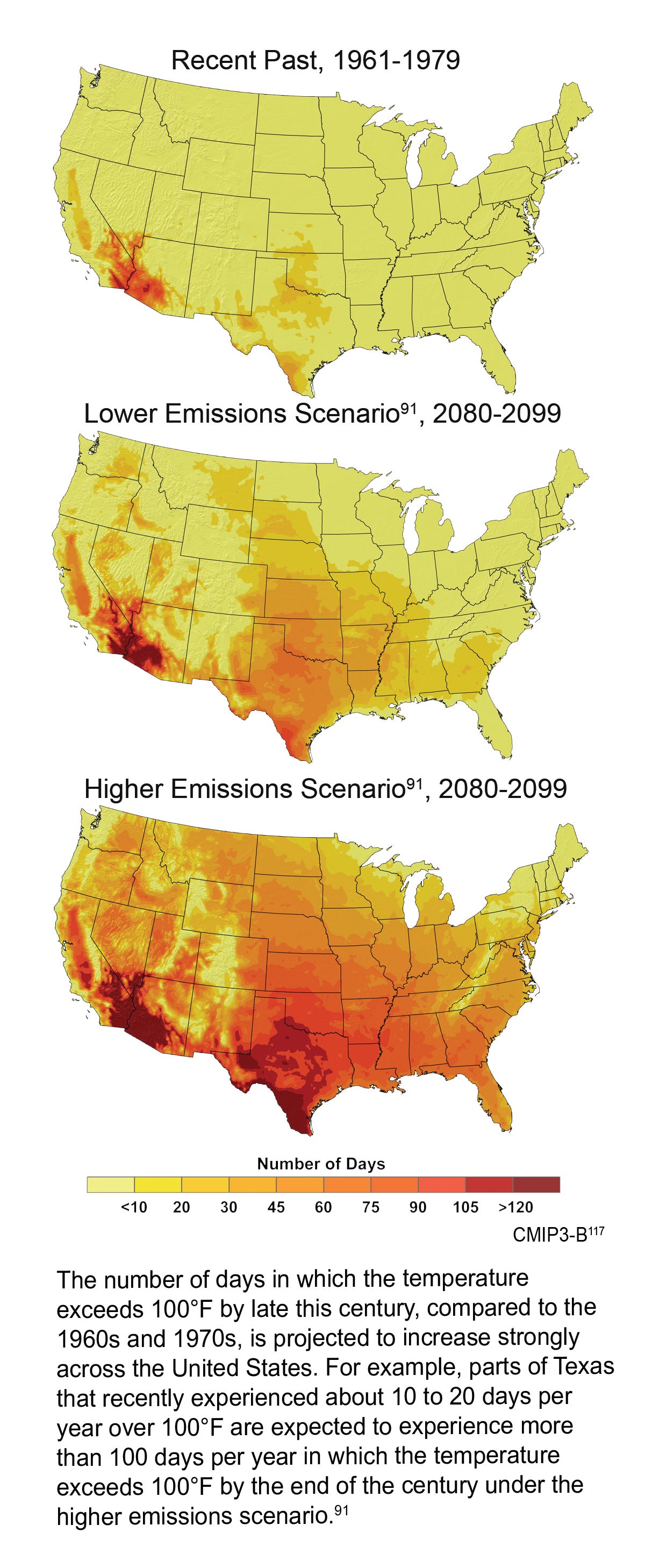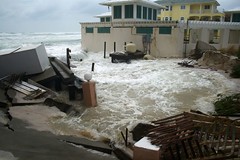That, in a nutshell, is Jim Manzi’s prescription for climate change (see the June 8 National Review). It’s a really, really bad one.
I’ll limit myself to three key points here, though there is much more to say about why Mr. Manzi is mistaken.
1. The damage from climate change in the United States is likely to be very large, and very bad. And it is coming soon.
Mr. Manzi may not have had the chance to take a look at the work done by the U.S. Climate Change Science Program, a major scientific effort by prominent research scientists from around the country, coordinated by scientists at federal agencies.
One thing this project has done is to look hard, using the best available scientific tools, at the specific impacts of climate change in the United States. The final draft report on that topic came out in early January 2009. That is, it came out during the George W. Bush Administration, with the approval of President Bush’s appointees across the federal government. It’s called Global Climate Change Impacts in the United States. You can see the draft here. (The final version should be out soon.)
It’s worth a close look. (The graphics are spectacular.) And it tells nothing like the Pollyanna-ish story that Mr. Manzi — a very successful entrepreneur, and obviously a smart person, but not a scientist — tells in his piece.
Just a few highlights of what we can expect during this century from the what-we-worry course that Mr. Manzi prefers:
- By the period 2080-2099, devastating heat waves of the kind that killed more than 700 people in Chicago in 1995 will occur three times per year.
- During that same period, the climate of Michigan will become like that of North Texas today. Illinois will become like South Texas.
- Florida will become stunningly and unrelentingly hot: “By the end of the century, projections indicate that North Florida will have more than 165 days (nearly six months) per year over 90˚F, up from roughly 60 days in the 1960s and 1970s.”
- The Great Lakes are likely to lose up to two feet in depth by 2070, with devastating effects on shipping: “up to 240 tons of capacity [per large ship] for each inch of draft lost.”
- “The combined effects of natural climate variability and human-induced climate change could turn out to be a devastating ‘one-two punch’ for the [Southwest] region.”
There is much more. I urge you, and Mr. Manzi, to read the CCSP report to see for yourself.
The 2080’s may sound like a long time away to Mr. Manzi, but they don’t to me: odds are my grandkids, and I hope my kids, will be alive to see the world we’ve left them.
2. However much we spend on government research, private firms will have no incentive to reduce their greenhouse gas pollution if it continues to be free to dump it into the atmosphere.
Curiously, Mr. Manzi does not credit the so-called “Breakthough Institute” for his proposal to solve the climate problem exclusively through government-funded research. But his advocacy suffers from the same fundamental problem as theirs: if a firm can emit pollution without paying any price for doing so, it has no incentive to spend money on cutting its pollution – whether using government-developed technology or otherwise.
It is truly surprising to see a prominent National Review columnist so strongly opposing use of the most basic of all free-market economic tools — markets and prices, which a cap would create — in favor of a hypothetical, future, government-funded, Buck Rogers fix. (Mr. Manzi’s philosophy is popularly known as “pay-and-pray.”)
Consider one (important) practical example. Suppose the government devotes vast resources to developing new and better ways to capture the carbon dioxide emitted by coal-burning power plants and burying it underground. (This is called “carbon capture and storage” in the business.) However advanced this technology may be, it will cost money. Why would Duke Power, AEP, or any other utility spend a penny on this technology if they can simply dump their pollution into the air for free?
Every undergrad who takes Econ 101 learns it’s bad if firms can impose their costs on other people – that is, externalize them. Starting with the Clean Air Act in 1970, we’ve insisted that companies internalize the costs of other types of pollution — like mercury, sulfur dioxide, and dioxin. But, in violation of the most basic rules of economics, we have yet to insist that firms internalize the costs of their global warming pollution. That’s what cap-and-trade — and the Waxman-Markey bill — does. It’s the right thing to do to protect us from the climate misery that the scientists tell us we are rushing towards if we continue, as Mr. Manzi urges, to do nothing.
3. Mr. Manzi’s projections of costs are far off base.
Lots of serious economists have looked at the economic impact of putting a ceiling on greenhouse gas emissions. And the consensus is that, at worst, it will have a very small impact on incomes and on GDP. I say “at worst” because no one knows how to model the ways in which necessity (a price on carbon) begets invention, and thus lower costs.
The EPA’s analysis of the current (Waxman-Markey) bill is consistent with this consensus: the Agency estimates that the bill is likely to cost households between $98 and $140 a year – less than a postage stamp a day.
Mr. Manzi says he can’t believe that. But the EPA’s analysis relied on two of the most respected and sophisticated economic models available. It is simply absurd for Manzi to baldly pronounce that “he doesn’t believe the numbers,” as if he were competent to judge what economic estimates are credible or not.
In any event, there’s plenty of logic behind the EPA analysis, including the fact that there are huge opportunities to live the same lifestyle we live now, while using much less energy.
Here’s a homely example: the office building in which my organization rents space in Washington, D.C. is heated by an archaic, inefficient boiler that operates at about 60% efficiency. Much more efficient boilers are available – boilers that save so much energy that they have payback periods of only a few years. (And there are American jobs at every stage of replacing this dinosaur, from mining to manufacturing to installation.)
The respected consulting firm McKinsey & Co. did a big study showing there are similar opportunities throughout the economy. With a little incentive from energy prices that internalize pollution costs, doing these sensible things becomes an easy lift.
There will always be voices telling us it’s too much trouble to control pollution – pieces like Mr. Manzi’s were commonplace before we cracked down on conventional pollutants in 1970, and before President George H.W. Bush used cap-and-trade to attack acid rain (very successfully) starting in 1990.
It would be a ghastly mistake to heed them.
 NOAA just released a terrific scientific report that explains, in plain English, the current and projected effects of climate change on the U.S. The nonpartisan report, prepared by the 13-agency U.S. Global Change Research Program, tells a grim but important story, clearly and with lots of powerful maps and charts. I encourage you to check it out to see how climate change will affect your area of the country.
NOAA just released a terrific scientific report that explains, in plain English, the current and projected effects of climate change on the U.S. The nonpartisan report, prepared by the 13-agency U.S. Global Change Research Program, tells a grim but important story, clearly and with lots of powerful maps and charts. I encourage you to check it out to see how climate change will affect your area of the country.










 Hurricane Ike storm surge hits Jetty East, by
Hurricane Ike storm surge hits Jetty East, by